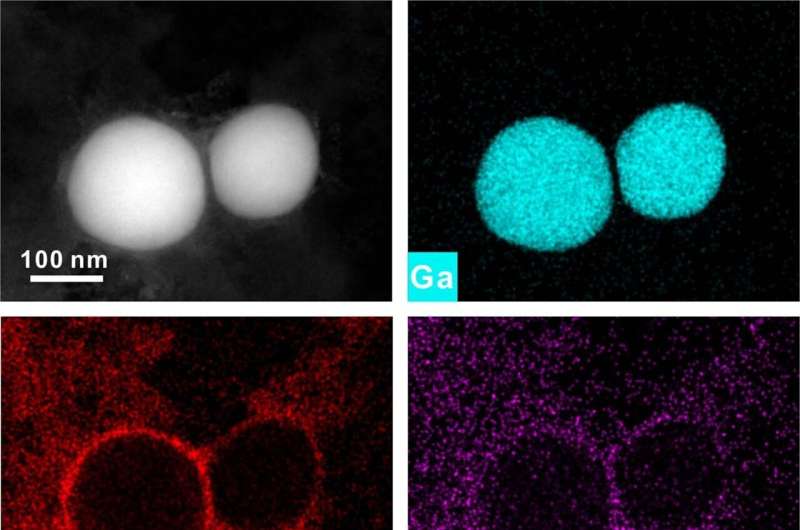June 15, 2023 report
This article has been reviewed according to Science X's editorial process and policies. Editors have highlighted the following attributes while ensuring the content's credibility:
fact-checked
peer-reviewed publication
trusted source
proofread
Using liquid metals to synthesize high-entropy alloy nanoparticles

A team of chemists and engineers affiliated with a large number of institutions in China has found that using liquid metal to synthesize high-entropy alloy nanoparticles (HEA-NPs) is a viable alternative to conventional methods. In their study, reported in the journal Nature, the group attempted to create a variety of HEA-NPs using liquid metals. The editors at Nature have published a Research Briefing in the same journal issue outlining the work.
High-entropy alloys are materials that contain at least five kinds of metals that exhibit useful qualities unobtainable in individual metals. Similarly, HEA-NPs are tiny particles containing a host of metals that have useful properties in combination.
However, synthesizing HEA-NPs has proven to be a challenge, particularly getting them to mix evenly. Current methods typically involve heating mixtures to temperatures as high as 2,000 Kelvin, which is dangerous and expensive. In this new effort, the team in China is claiming to have found a much better way.
The technique is simple—instead of mixing the ingredients and heating them to a high temperature, the team mixed them in a liquid metal first. They found that doing so, using a liquid metal such as liquid gallium, allows for creating an evenly mixed HEA-NP. This mixture then needs to be heated to just 923 Kelvin to produce a desired product.
The research team tested their idea with several liquid metals and created a variety of HEA-NPs composed of different metals and found that they were evenly mixed. They also conducted compositional and structural analysis of the materials and found them to be on a par with those made using the conventional method.
The team concludes that their method could be used to synthesize a wide variety of HEA-NPs and could possibly be used to synthesize other types of materials as well.
More information: Guanghui Cao et al, Liquid metal for high-entropy alloy nanoparticles synthesis, Nature (2023). DOI: 10.1038/s41586-023-06082-9
Nanoparticles containing diverse elements made using liquid metal, Nature (2023). DOI: 10.1038/d41586-023-01793-5
Journal information: Nature
© 2023 Science X Network


















